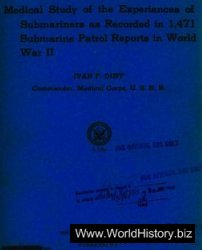From World War I through the 1920s, over a million African Americans migrated from the South to northern industrial cities. Known as the Great Migration, their movement marked a crucial transition in the history of African Americans, cities, and the working class. The causes of the migration were complex and involved factors that pushed the migrants out of the South and others that attracted them to the North. It is important to remember, however, that at the base of the migration were millions of individual African Americans who decided that their hopes for full citizenship lay in the northern cities.
African Americans had been migrating since the end of the Civil War in their search for independence. Traditionally they sought freedom from white control through land ownership, moving anywhere that whites did not restrict their actions and rights. By the 20th century, with the enactment of segregation laws throughout the South and efforts by whites to control African-American labor, dreams of independence through land ownership were fleeting. Many farmers who did own their own land were at the mercy of white-owned banks and businesses to which they owed money. When hard times hit, African-American farmers who were already living on the edge of subsistence found it increasingly difficult to make ends meet. Many were forced to sell their farms at discounted prices in order to pay off their debts. The African-American farmers were hit particularly hard when the cotton crops were destroyed by the boll weevil in the first decade of the century.
Farmers forced off the land had few choices about where to work. They could join other African Americans who already farmed as sharecroppers and tenant farmers, or they could move to southern cities. Sharecropping and tenant farming were uncertain ways of making a living

Men shoveling snow onto a wagon after a storm, Washington, D. C., ca. 1915 (Library of Congress)
From farming. In both, African-American farmers rented land from white landowners. In sharecropping they paid their rent with a share of the crop produced, while in tenant farming they paid their rent through cash payments. In the case of many small farmers, the value of their crops never exceeded their rent, so every year they fell further and further into debt. The process forced them to remain on the same farm because local laws made it illegal to move if one owed a debt. Those African Americans who lived in southern cities faced similar restrictions on their actions. Only the jobs lowest on the occupational hierarchy were available to them.
In addition to their economic plight, African Americans living in the South suffered from legal, physical, and social exploitation. The denial of voting rights was at the center of the efforts by southern whites to exert control over African Americans. After Reconstruction ended, white-controlled state legislatures disenfranchised African-American voters throughout the South. Whites also created a segregated social order determined by a strict set of racial protocols. Separate facilities for whites and African Americans were created. Individual relationships were determined by these racial customs based on the subservience of African Americans to whites at all times. If African Americans overstepped social boundaries, they often faced a violent backlash. Whites used lynching to punish African Americans who overstepped racial bounds.
It was not until changes occurred in the industrial North that large numbers of African Americans seized the opportunity to migrate. Blacks in the North had experienced many of the same restrictions on their occupational choices prior to World War I. They were relegated to domestic services or to work as laborers. Higher paying industrial jobs were closed to them. This changed during the war. Immigration from Europe, one of the major sources of industrial labor, slowed to a trickle. Whereas a few years earlier approximately one million immigrants annually entered the United States, the flow slowed to around 100,000 each year during the war. In addition, when America entered the war, many white workers left their jobs to join the Armed Forces. Without a labor supply from abroad, American industrial corporations began to hire African Americans for the first time. These new economic opportunities were integral to the decisions of many African Americans to migrate North.
Many southern African Americans learned of the new opportunities from friends, relatives, and neighbors who had traveled north. Some migrants remember their communities being struck with migration fever, as they called it. As more people migrated, the news spread, which served to attract more migrants. Pullman car porters and other African-American railroad workers made up another network communicating the news. Many of these men lived in Chicago, and spread the news as they traveled from town to town. They also played another significant role by distributing African-American newspapers, such as the Chicago Defender. The papers served as militant voices for black aspirations. Many migrants drew their images of life in the urban North from the pages of these newspapers.
Despite reports of migrant fever, most African Americans undertook the migration with a great deal of planning. They sought out information about their destinations, and many patiently waited for their chance by saving up enough money to make the trip. Many of those living in the Deep South made the migration in steps, moving first to a nearby city and then city by city until they reached their final destination. This way they earned enough money at each step to continue to the next one.
Upon reaching their destination, migrants found an environment that provided them with new possibilities but fell far short of full citizenship and personal independence. The jobs in Chicago’s meat-packing houses and Pittsburgh’s steel mills that had lured many North paid two to three times what African Americans could earn in the South. There was little chance, however, for promotion beyond entry-level positions. Schools were almost incomparably better than those provided for African Americans in the South, but even with a high school education, many graduates faced difficulty finding a job that afforded them a chance to use their skills. Migrants soon realized that the right to vote did not automatically give them political power. They also found that they faced discrimination in housing. African Americans were forced to live in segregated areas of the cities. This segregation was imposed in many ways. Realtors and landowners refused to rent or sell property to African Americans in certain sections of cities. In addition, whites often physically attacked African Americans who moved outside the prescribed boundaries. With their choices restricted, African Americans were forced to live in areas that became defined by overcrowding and high rents. African Americans also faced racial violence in northern cities. In East St. Louis in 1917 and Chicago in 1919, to name two examples, race riots occurred that left 39 African Americans dead in St. Louis and 23 in Chicago.
Despite all these restrictions, African Americans managed to create vibrant urban communities that played significant roles in America’s cultural history. Without the migration to the North, for example, BLUES music would never have made the contribution that it has. Only by gaining access to urban audiences and the RADIO could blues musicians popularize their work. Other contributions in literature, art, and music such as the Harlem Renaissance grew directly out of the urban communities created by the Great Migration.
The Great Migration thus marked a crucial transition in the history of America. For African Americans, it marked the end of their reliance on agricultural independence as the means for gaining full citizenship and shifted the center of African-American population to the northern cities. The African-American communities became the driving force in the freedom struggles. The migration also reshaped the political, social, economic, and demographic landscapes of America’s cities. Finally, the migration reshaped the history of the American working class as African Americans entered the industrial workforce in large numbers for the first time.
See also CITIES AND URBAN LIFE; LABOR AND LABOR MOVEMENT; RACE AND RACIAL CONFLICT.
Further reading: James R. Grossman, Land of Hope: Chicago, Black Southerners, and the Great Migration (Chicago: University of Chicago Press, 1989); Joe William Trotter, Jr., ed., The Great Migration in Historical Perspective: New Dimensions of Race, Class, and Gender (Bloomington: Indiana University Press, 1991).
—Michael Hartman




 World History
World History









